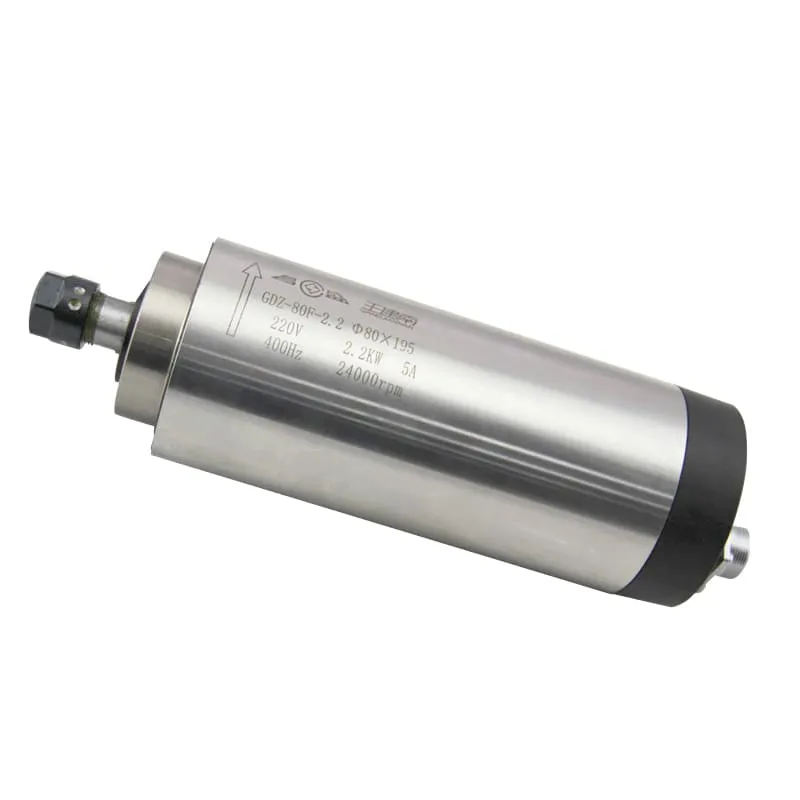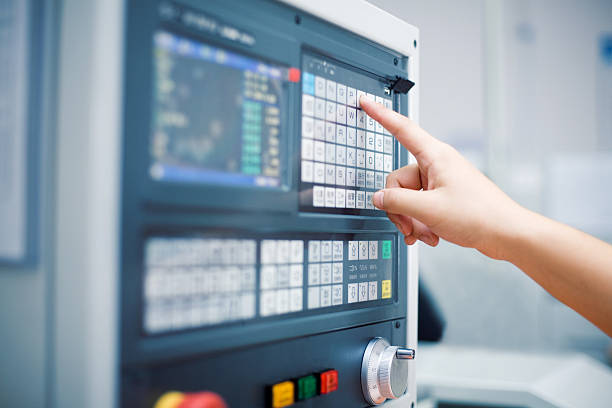How CNC Machine Works
Computer Numerical Control (CNC) machines have revolutionized the manufacturing industry by providing precision, efficiency, and versatility in producing parts. This comprehensive guide will explore the inner workings of CNC machines, their components, and the processes they employ to create a wide range of products.
Understanding CNC Machines
CNC machines are automated manufacturing tools that use computer-controlled programs to dictate the movement of production equipment. These machines can create complex three-dimensional cutting paths with high precision and repeatability.

A typical CNC machine setup
Key Components of a CNC Machine
To understand how a CNC machine works, it’s essential to familiarize yourself with its main components:
- Computer Control System: The brain of the CNC machine
- Machine Control Unit (MCU): Interprets the program and controls the machine’s movements
- Machine Tool: The actual cutting or shaping device
- Drive System: Motors and transmission that move the machine tool or workpiece
- Feedback System: Ensures accuracy by monitoring position and speed
- Workholding Devices: Secure the workpiece during machining
The CNC Machining Process
The CNC machining process involves several steps:
1. Design Creation
- A 3D model of the part is created using Computer-Aided Design (CAD) software
- The design specifies the dimensions and features of the final product
2. CAM Programming
- Computer-Aided Manufacturing (CAM) software converts the CAD model into a series of machine instructions
- These instructions, typically in G-code, guide the machine’s movements
3. Machine Setup
- The CNC operator loads the program into the machine’s control system
- Tools are selected and loaded into the machine
- The workpiece is secured in the machine using appropriate workholding devices
4. Machining Operation
- The CNC machine executes the program, moving the cutting tool or workpiece as instructed
- The machine performs various operations such as milling, turning, drilling, or grinding
5. Quality Control
- The finished part is inspected to ensure it meets the required specifications
- Any necessary adjustments are made to the program or machine setup
Types of CNC Machines
CNC technology is applied to various types of machines, each suited for different manufacturing tasks:
1. CNC Mills
- Used for cutting and shaping solid materials
- Can perform operations like face milling, shoulder milling, and hole making
- Often equipped with tools like the 2.2KW ER20 Air-Cooled Spindle
2. CNC Lathes
- Ideal for creating cylindrical parts
- The workpiece rotates while cutting tools shape it
- Can perform turning, facing, threading, and drilling operations
3. CNC Routers
- Commonly used for woodworking and soft materials
- Similar to mills but typically have a larger work area
- Often use tools like the 3.5KW ER20 Air-Cooled Spindles for more power
4. CNC Plasma Cutters
- Used for cutting metal sheets and plates
- Utilize a plasma torch to melt and cut through conductive materials
5. CNC Electrical Discharge Machines (EDM)
- Use electrical discharges to shape metal
- Ideal for creating complex shapes in hard materials
How CNC Machines Achieve Precision
CNC machines are known for their high precision. This is achieved through several mechanisms:
1. Numerical Control
- Programs provide exact coordinates and movements
- Eliminates human error in manual machining
2. Feedback Systems
- Encoders and sensors constantly monitor the machine’s position
- Real-time adjustments ensure accuracy
3. Rigid Construction
- Solid machine frames minimize vibration and flexing
- Precision-ground components ensure smooth movement
4. Tool Compensation
- The machine can adjust for tool wear and deflection
- Ensures consistent accuracy over time
The Role of G-code in CNC Operation
G-code is the language that CNC machines understand. It provides instructions for:
- Tool movements (e.g., G00 for rapid movement, G01 for linear interpolation)
- Spindle speed and direction
- Coolant control
- Tool changes
Understanding G-code is crucial for fine-tuning CNC operations and troubleshooting.
Advanced Features of Modern CNC Machines
Contemporary CNC machines offer advanced capabilities:
1. Multi-Axis Machining
- 5-axis and even 7-axis machines can create complex geometries
- Allows for machining from multiple angles in a single setup
2. Tool Changers
- Automatic tool changers reduce setup time
- Allow for complex parts requiring multiple tools
3. Probing Systems
- In-machine probing for part setup and inspection
- Enhances accuracy and reduces setup time
4. Adaptive Machining
- Real-time adjustments to cutting parameters
- Optimizes machining process for efficiency and tool life
CNC Machine Maintenance
Proper maintenance is crucial for the optimal operation of CNC machines:
- Regular Cleaning: Remove chips and debris
- Lubrication: Ensure all moving parts are properly lubricated
- Calibration: Periodically check and adjust machine alignment
- Tool Management: Monitor tool wear and replace as needed
- Software Updates: Keep control software up to date
Safety Considerations in CNC Machining
Safety is paramount in CNC operations:
- Operator Training: Ensure all operators are properly trained
- Machine Guarding: Use appropriate guards and enclosures
- Emergency Stops: Implement and test emergency stop systems
- Personal Protective Equipment (PPE): Use appropriate safety gear
- Proper Ventilation: Ensure adequate ventilation for fumes and dust
The Future of CNC Machining
CNC technology continues to evolve:
- Integration with AI: Machine learning for optimized cutting strategies
- Additive Manufacturing Integration: Hybrid machines combining CNC and 3D printing
- Internet of Things (IoT): Connected machines for real-time monitoring and predictive maintenance
- Virtual and Augmented Reality: Enhanced interfaces for programming and operation
Environmental Considerations
Modern CNC machining is addressing environmental concerns:
- Energy Efficiency: More efficient motors and systems
- Waste Reduction: Optimized toolpaths and nesting for material efficiency
- Coolant Management: Recycling and eco-friendly coolant options
- Sustainable Materials: Exploring more environmentally friendly materials
FAQ
1. How does a CNC machine know where to cut?
The CNC machine follows a program of coded instructions, typically G-code, which provides precise coordinates and movement instructions for the cutting tool.
2. Can CNC machines work without human intervention?
While CNC machines can execute programs autonomously, they still require human intervention for setup, monitoring, and maintenance.
3. How accurate are CNC machines?
CNC machines can achieve very high accuracy, often within tolerances of ±0.001 inches or better, depending on the specific machine and application.
4. What materials can CNC machines work with?
CNC machines can work with a wide range of materials including metals, plastics, wood, composites, and even some ceramics.
5. How long does it take to create a part with a CNC machine?
The time varies greatly depending on the complexity of the part, the material being used, and the specific machining operations required. It can range from a few minutes to several hours.
6. Can a CNC machine create any shape?
While CNC machines are very versatile, they do have limitations based on the type of machine, the tools available, and the physical constraints of machining processes.
Conclusion
CNC machines represent a remarkable fusion of mechanical engineering, computer science, and manufacturing technology. Their ability to consistently produce complex parts with high precision has made them indispensable in modern manufacturing.
Understanding how CNC machines work provides insight into the capabilities and limitations of this technology. From the initial design phase through to the final machining operations, CNC processes offer a level of control and repeatability that has transformed industrial production.
As CNC technology continues to evolve, we can expect to see even greater levels of automation, precision, and integration with other manufacturing technologies. The ongoing development of more sophisticated control systems, advanced materials, and innovative tooling will further expand the capabilities of CNC machines.
For anyone involved in manufacturing, engineering, or product design, a solid grasp of CNC technology is invaluable. Whether you’re operating these machines, designing parts for CNC production, or managing manufacturing processes, understanding the principles behind CNC operation will enable you to leverage this powerful technology effectively.
The world of CNC machining is dynamic and ever-changing, offering continuous opportunities for learning and innovation. As we look to the future, CNC machines will undoubtedly play a crucial role in shaping the manufacturing landscape, driving advancements in fields ranging from aerospace and automotive to medical devices and consumer products.
By embracing the capabilities of CNC technology and staying abreast of its developments, manufacturers and engineers can continue to push the boundaries of what’s possible in production, creating ever more sophisticated and precise parts to meet the evolving needs of industry and society.

